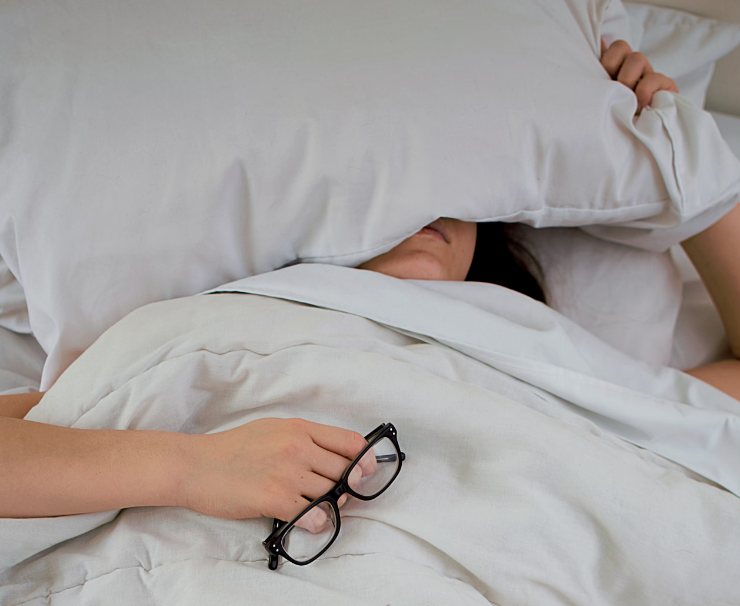Video
FDA-Approved Therapies for the Management of Sleep Disorders
Author(s):
Drs Ashgan A. Elshinawy, C. Michael Gibson, and Nathaniel F. Watson discuss FDA-approved medications currently used for the treatment of sleep disorders and insomnia, and comment on the difference between DORAs.
C. Michael Gibson, MD: There are a lot of different treatments out there. You mentioned a million different pathways, receptors, and neurological active things. Ashgan, what are some of the FDA-approved treatments like benzodiazepines and other things that are out there?
Ashgan A. Elshinawy, DO: Yes. This is a good follow-up to what Dr Watson was talking about all of the neurotransmitters that there are involved in keeping you asleep, or keeping you awake. A lot of the drugs that have been out for decades now have been kind of directed to target those neurotransmitters in those pathways. If you look back to over 50 years ago, we were using barbiturates. We kind of gasp now at that thought. This is kind of what is used for the kind of deep anesthesia. Certainly, we don’t use those anymore for obvious reasons, but that was the state-of-the-art and an appropriate medication at the time. Since then, benzodiazepines have come into play as sleeping aids. Again, we try not to use those so much because they have a lot of side effects, such as respiratory depression. As a pulmonologist, I'm definitely sensitive and aware of that especially with my underlying lung disease patients. Then, there’s the non-benzo Z drugs that have become very popular in the last few decades. They have their slew of side effects as well. These are all FDA-approved drugs, but the physician has to be very aware of possible drug interactions and side effect profiles of all of these medications in addition to their half-lives. More recently, there’s been antidepressants that have been used for insomnia, but there’s only FDA-approved antidepressant drugs out there. But, doctors use other ones and say, “We’re treating your insomnia with it.” Then, more recently, there is the dual orexin receptor antagonist [DORA], which would help to promote sleepiness by antagonizing, or inhibiting, the orexin pathway.
C. Michael Gibson, MD: There’s the mythology in my family that one of my elderly family members was hospitalized with an illness, and they got put on Valium. She practically went into a coma and wasn’t being cleared. They put her on hospice care. I said, “No. Stop the Valium.” Within a day or two, she woke up, and everyone thought, “Oh my God. This was amazing.” The benzodiazepines can be pretty dangerous in elderly people. Nate, talk to us about the DORAs. There’s several in the class. How are they similar? How do they differ from each other?
Nathaniel F. Watson, MD: That’s a great question. If we talk about similarities, one is because they’re orexin receptor antagonists. As I was talking before about the neurophysiology of sleep, we discussed how orexin is important to stimulate these monoaminergic centers that are involved with wakefulness. If you’re antagonizing that, you risk stimulating some narcolepsy symptoms. All of these medications and all of the DORAs are contraindicated in patients with narcolepsy. They all have a novel mechanism of action in the sense that instead of sedating the brain through GABA [gamma aminobutyric acid] pathways, they reduce the wakefulness signal. It’s interesting because that can be a different experience for the patient. If they don’t feel like their brain has been dulled by a general kind of sedative, they may think, “Oh, well this medication’s not working for me because I don’t have that side effect.” That could potentially be an issue for all of the medications in this class. The dosages are a bit different for suvorexant. Five, 10, 15, and 20 milligrams for lemborexant. Five and 10 milligrams in daridorexant. Twenty-five and 50 milligrams are your approved doses. They all require suvorexant and daridorexant to be taken within 30 minutes of bedtime and have 7 hours of sleep time in front of you. The lemborexant is recommended to take at bedtime, so that’s a difference there. Then, Dr Elshinaway mentioned half-life, and we always think about half-lives when we’re talking about sleep medications. There are differences in the half-lives of these DORAs. For instance, suvorexant has a half-life of 12 hours, lemborexant’s half-life is 17 to 19 hours, and daridorexant’s half-life is 8 hours. The shorter half-life is a bit more attractive because the medication is going to get out of the system quicker. You’re going to have less of a chance for the medication to be lingering and to have untoward side effects during the day. That’s an important consideration here as we think about this class of medications.
C. Michael Gibson, MD: A lot of people take antihistamines to try to fall asleep. A lot of people who are travelers take Ambien. There is a fair amount of hangover with that. It’s interesting to hear about the 8-hour half-life. That could be a little better in terms of maybe not having those kinds of hangovers.
Transcript edited for clarity





